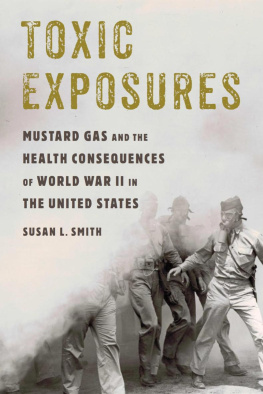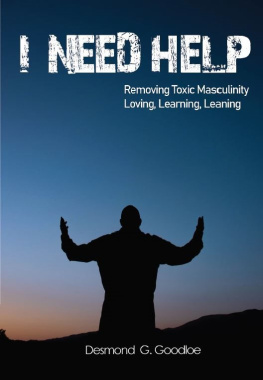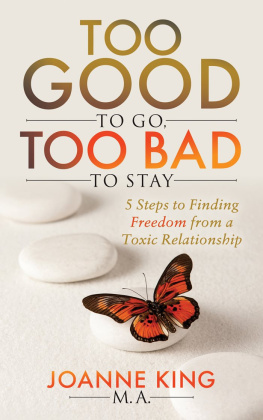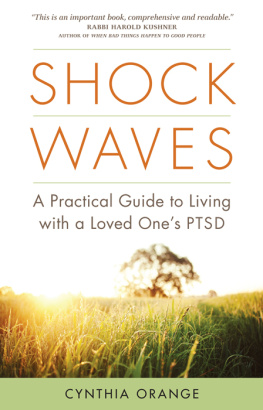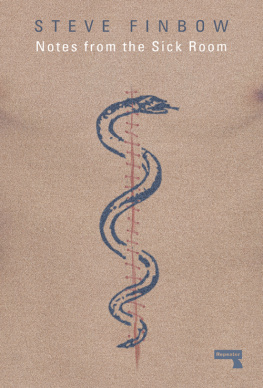Contents
Guide
Pagebreaks of the print version
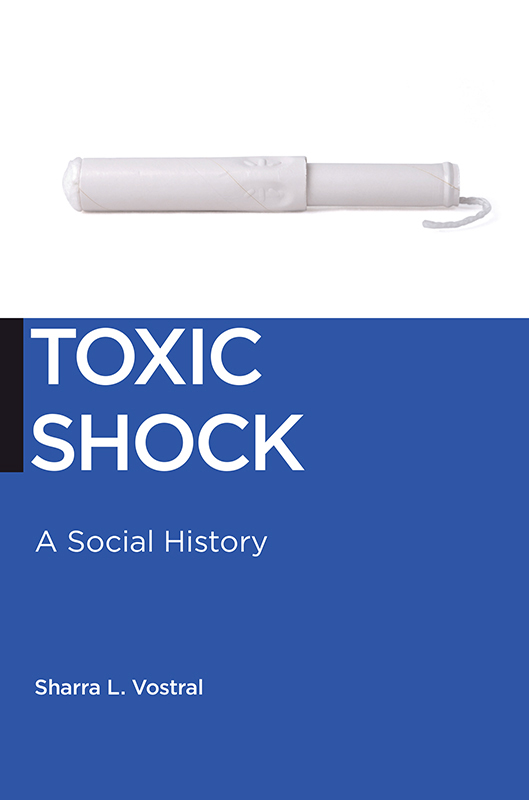
TOXIC SHOCK
Toxic Shock
A Social History
Sharra L. Vostral

NEW YORK UNIVERSITY PRESS
New York
NEW YORK UNIVERSITY PRESS
New York
www.nyupress.org
2018 by New York University
All rights reserved
References to Internet websites (URLs) were accurate at the time of writing. Neither the author nor New York University Press is responsible for URLs that may have expired or changed since the manuscript was prepared.
Library of Congress Cataloging-in-Publication Data
Names: Vostral, Sharra Louise, 1968 author.
Title: Toxic shock : a social history / Sharra L. Vostral.
Description: New York : New York University, 2018. | Includes bibliographical references and index.
Identifiers: LCCN 2018012210| ISBN 9781479877843 (cl : alk. paper) | ISBN 9781479815494 (pb : alk. paper)
Subjects: LCSH : Toxic shock syndrome. | Toxic shock syndromeSocial aspects. | TamponsComplications.
Classification: LCC RG 220 . V 67 2018 | DDC 614.5/797dc23
LC record available at https://lccn.loc.gov/2018012210
New York University Press books are printed on acid-free paper, and their binding materials are chosen for strength and durability. We strive to use environmentally responsible suppliers and materials to the greatest extent possible in publishing our books.
Manufactured in the United States of America
10 9 8 7 6 5 4 3 2 1
Also available as an ebook
To everyone who has ever used a tampon
CONTENTS
ABBREVIATIONS
ASTM | American Society for Testing and Materials |
BWHBC | Boston Womens Health Book Collective |
CDC | Centers for Disease Control |
CMC | carboxymethylcellulose |
CMDA | Center for Medical Device Analysis |
EIS | Epidemic Intelligence Service |
FCC | Federal Communication Commission |
FDA | Food and Drug Administration |
FFDCA | Federal Food, Drug and Cosmetic Act |
HHS | Health and Human Services |
ICD | implantable cardioverter defibrillator |
IUD | intrauterine device |
JAMA | Journal of the American Medical Association |
MDA | Medical Device Amendments |
MMWR | Morbidity and Mortality Weekly Report |
MRSA | methicillin-resistant Staphylococcus aureus |
NCL | National Consumers League |
NEJM | New England Journal of Medicine |
NIH | National Institutes of Health |
OBOS | Our Bodies, Ourselves |
OMB | Office of Management and Budget |
P&G | Procter & Gamble |
R BGH | recombinant bovine growth hormone |
TSS | toxic shock syndrome |
TSST-1 | toxic shock syndrome toxin-1 |
Introduction
Toxic Shock Syndrome
I became aware of toxic shock syndrome (TSS) after my first period in 1982, while in eighth grade. During a subsequent menstrual cycle, I caught a cold and became increasingly worried that I had contracted TSS. This was not such an outlandish conclusion on my part. TSS was the third most reported-on news story in 1980, behind the Iranian hostage crisis and the presidential election. The NBC Nightly News was a dinnertime staple, I had a subscription to Seventeen magazine, and I flipped through my mothers Good Housekeeping , and all had reported on this new illness. I absorbed reports of current events, and news sources warned that a tampon plus a fever equated to a scary disease, possibly even to death. My mother, a nurse, quickly rebuffed my concerns. She was a longtime Tampax user who trusted the safety of the product. I suspect she interpreted my concerns as the manifestations of an overreactive teenager. Despite her assurances, the message I received was loud and clear: TSS was a possible side effect from wearing tampons, and I must be vigilant to monitor my body for any sign of potential disease when I used them.
As I grew older and continued to use tampons, I neither contracted TSS nor died from using a tampon. My experience with them was incongruous with the warning label on the box, and I always wondered about these heavy-handed labels. Was I being reckless by disregarding the warning? Or was TSS still lurking, and only I could save myself from corporate malfeasance? For how long could I use tampons and not fall ill, thus have my cake and eat it, too? As an adult who has spent many years contemplating TSS, I am more sympathetic to the conundrum. While it is true that a confluence of corporate interests, epidemiological studies, womens health activism, and womens desires to use tampons influenced the politics of tampon-related TSS, there is one important common denominator. All were influenced by the belief that tampons are inert. This faulty premise and the consequences of assuming that tampons are inert provided the backdrop for the new illness. The prevailing notion of the inert nature of tampon technology explains why the devastating outcome of womens deaths were so difficult to study and understand; this traditional way of thinking about disease, technology, and womens bodies was insufficient in encountering what came to be identified as tampon-related TSS. Though it is not recognized as such, tampon-related TSS was a paradigm shift in the way that illness manifests because the supposedly inert tampon interacted with a common bacterium to cause sickness in otherwise healthy women. No longer was an infection the origin of disease, or a faulty product the direct cause of injury. Together, a new pathway to an illness formed, in which a supposedly inert tampon became interactive, and a bacterium, once held in bodily equilibrium, grew dominant and produced toxins. Toxic Shock: A Social History makes a case for understanding tampon-related TSS as the result of biocatalytic activity between technology and bacterium. Moreover, though women were the primary consumers, the bacterium became the unintended user. This unusual disease process challenged standard approaches to public health and required women to evaluate technological risk. It likely portends increasing incidence of injury related to medical devices used and worn within the human body.
Tampon-related TSS is unique in that it is contingent on both bacterium and technology interacting with one another. TSS is unusual in that it is an illness that strikes otherwise healthy individuals and is predominantly associated with a human-made technology. Many people had a difficult time accepting this relationship, believing that tampons were inert. And those who recognized that something was afoot could not necessarily prove scientifically the mechanisms by which TSS manifested. Because hundreds of thousands of women who menstruated used tampons, and many carried the requisite bacterial strain of Staphylococcus aureus , scientific findings about TSS were urgent. Health practitioners, corporate scientists, federal policy makers, and feminist political advocates shaped and defined the terms of the emergent illness. They both articulated and challenged notions of risk, the results of which changed the conceptualization of tampons from benign to dangerous, affecting all tampon users. Moreover, this tampon technology shares a legacy of silence and coded language linked with menstruation, at best tolerated and at worst shamed. Thus, presumptions about menstruation came to bear on tampon technologies, the conditions of illness, and how women should be warned about potential risk.


